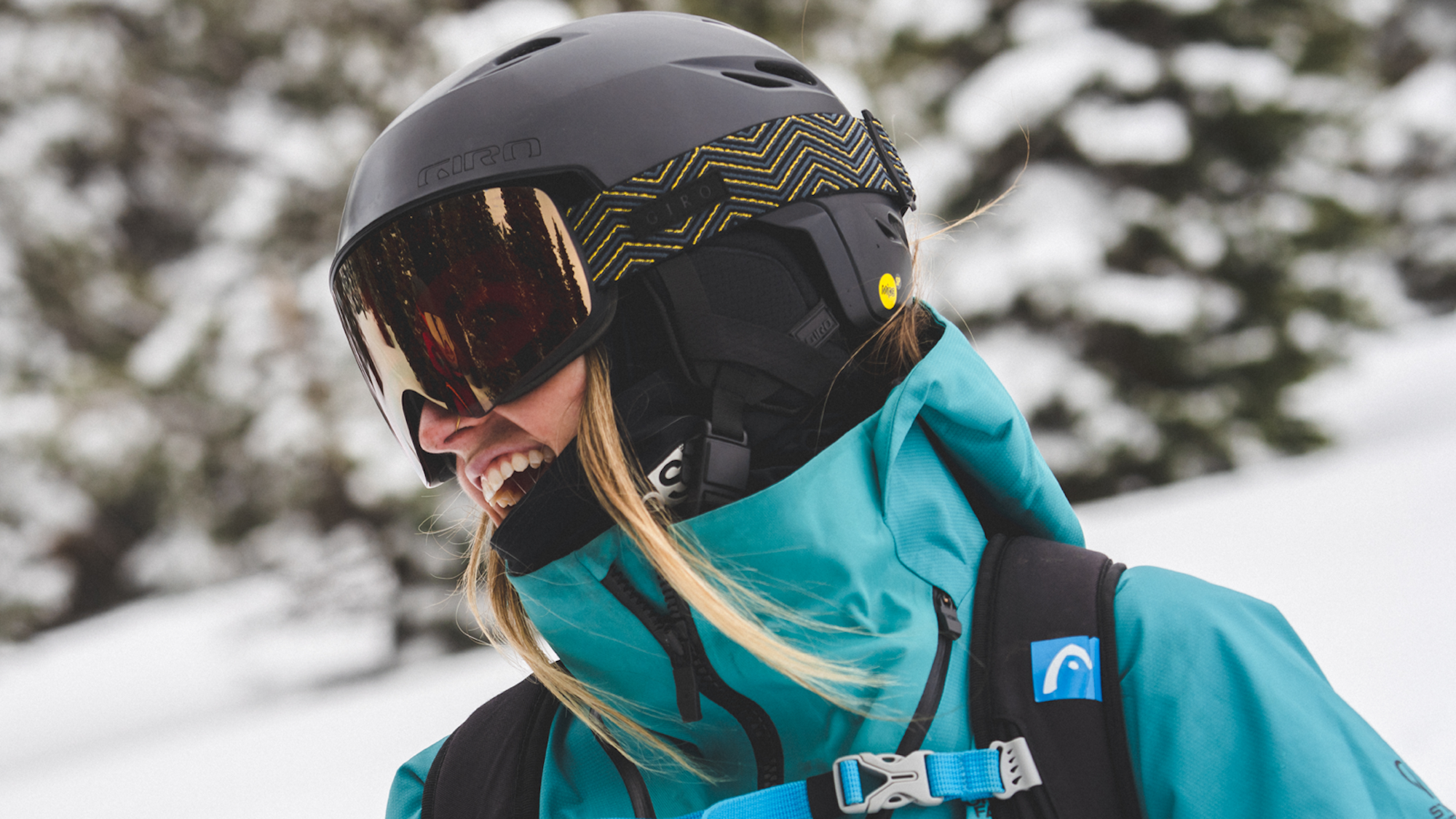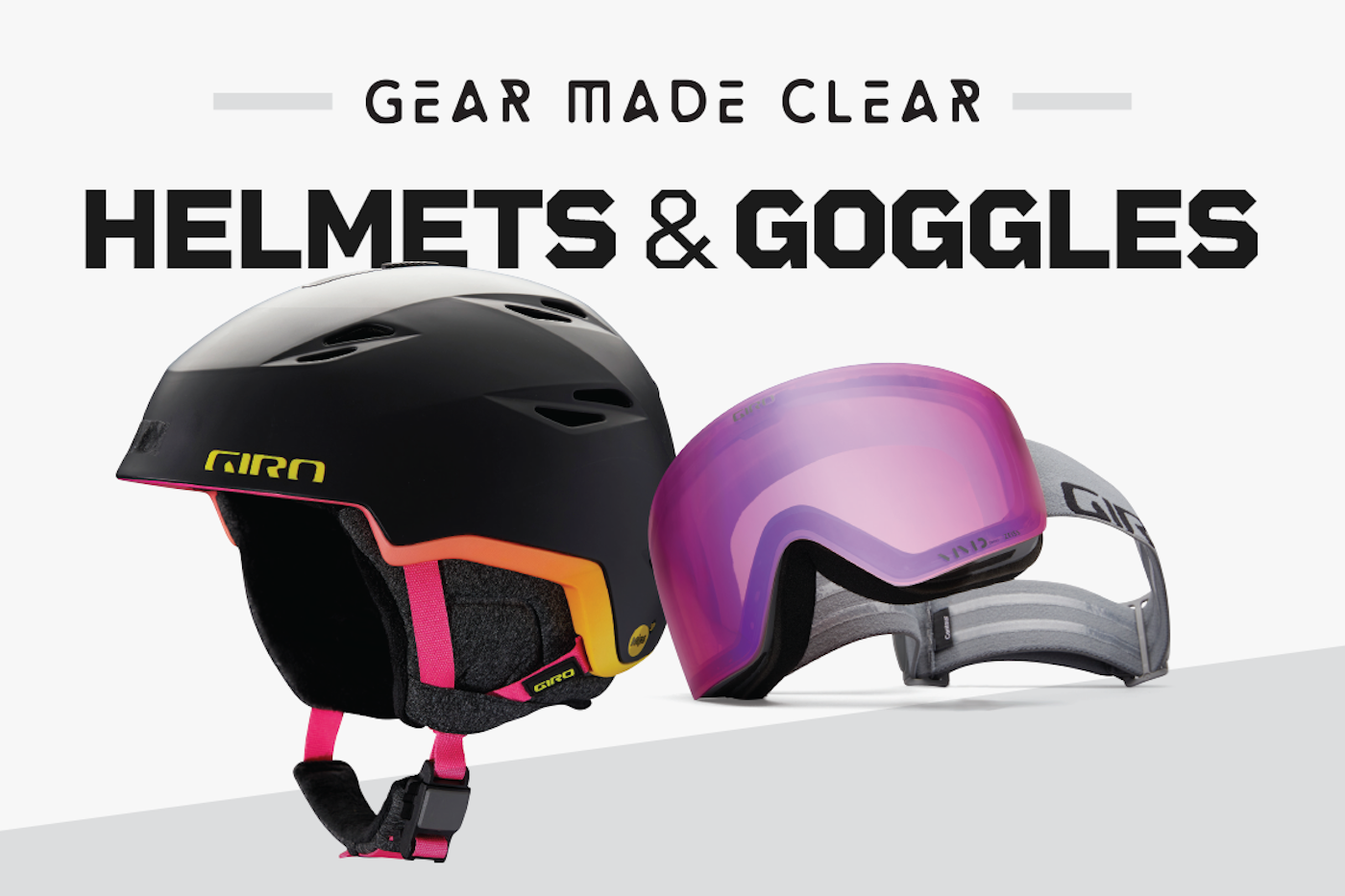
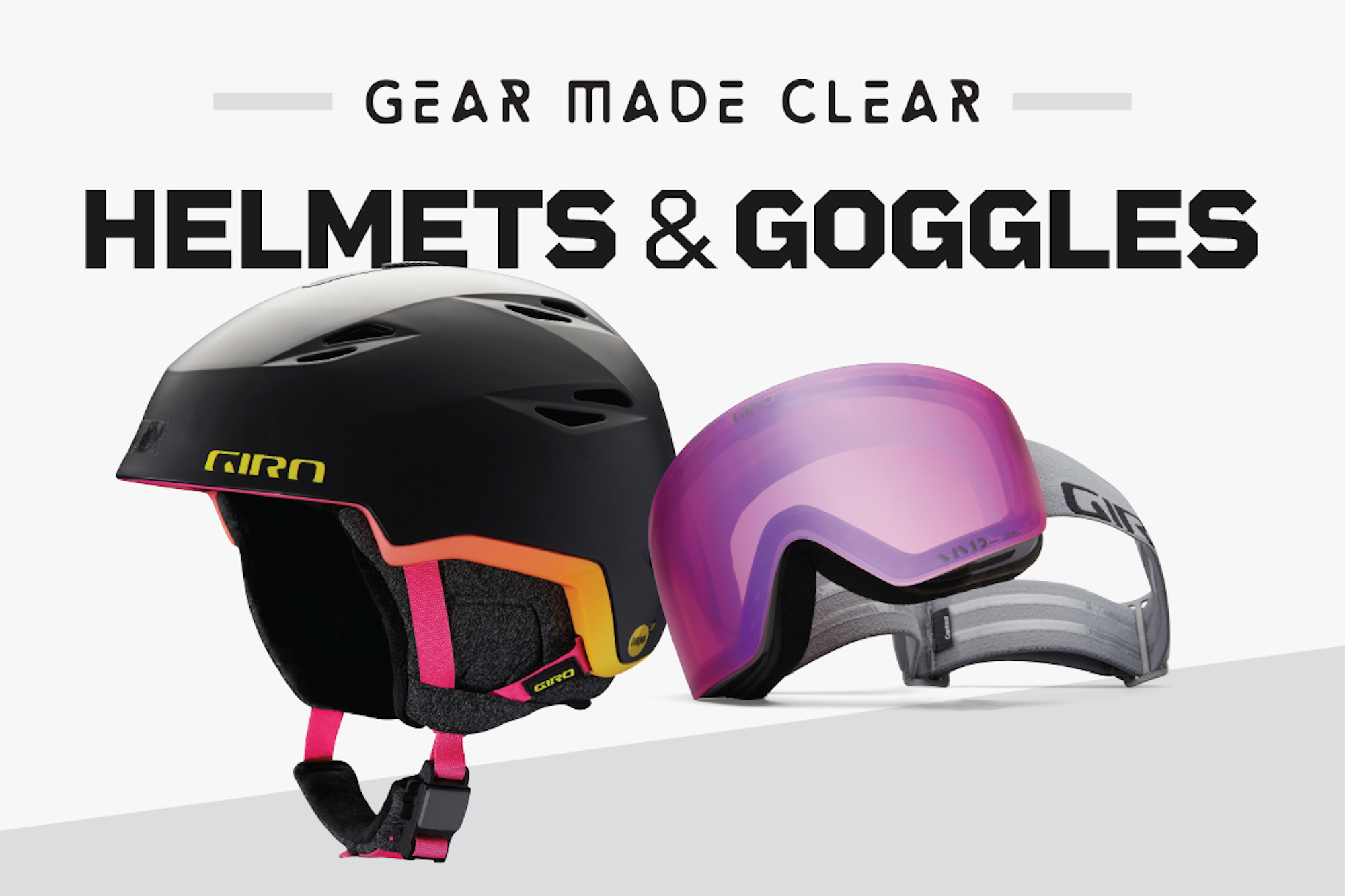
When it comes to modern day ski gear, helmets and goggles reside at the intersection of fashion and function. Both are essential to your safety on the mountain and also come in an array of colors and shapes that you can use to express your own style. But, simply put, function should always come first. Flashy, reflective lenses might look stylish, but are they fine-tuned for the day’s conditions? A sleek, low-profile helmet may look cool but what features are packed inside that’ll keep your noggin safe during a fall? To get the lowdown on skiing’s latest helmet and goggle trends, and help you make better purchasing decisions this season, FREESKIER spoke to Giro Sport Design Brand Manager, Travis Tomczak.


For helmets, fit is number one. Just like a ski boot: if it doesn’t fit, you’re not gonna have a good time. Helmets are not all the same and neither are our heads; you’ve got to find what actually works for you. When people wear an uncomfortable helmet—and a lot of people do—they compromise performance.
If you have the opportunity to try the product on, you’re going to end up more confident in your purchase. In this world, where direct-to-consumer sales are booming, we do sell helmets online. But there’s a lot of people out there that are wearing products that don’t fit them properly. It can be simple, like choosing a large when you should wear a medium, so it’s best to buy in-person. But if you are going to purchase helmets and goggles online, definitely buy both from the same brand.
There are helmets on the mainstream market that are not specifically snow-certified; that is something you want to keep in mind. A snow helmet is not bike-certified and vice-versa. I see this all the time—folks tour up and then ski down wearing rock climbing helmets. These helmets are made to protect from rocks falling directly from above. When you crash while skiing, it’s not a direct impact and there isn’t just one impact in one place. That’s exactly why we made the Grid: To provide a lightweight, functioning helmet for backcountry athletes to still have the downhill protection when skiing out of bounds.
MIPS is a technology, not a certification. MIPS is a “multi-directional impact protection system,” and it’s really important. There are plenty of studies that show it does make a difference. But there are ways to make MIPS fit better. You can take a basic snow helmet, add MIPS to it and it’ll pass the tests, but it’ll fit like garbage. When Giro designs helmets, we design those pieces to provide the best fit and style. We want to build something that truly integrates our helmet design with MIPS Spherical technology.
It all starts with industrial design. Our designers create a look and feel, then the engineers make the helmet actually work, ensuring the form doesn’t get in the way of function. They start with sketches, then clay molds and three-dimensional printed “eggs.” In our space, [not many] brands are able to complete this process start-to-finish the way we do. We have the “Dome,” an independent test lab in Scotts Valley, California, which is unique because it allows us to do internal checks before sending helmets out for certification.
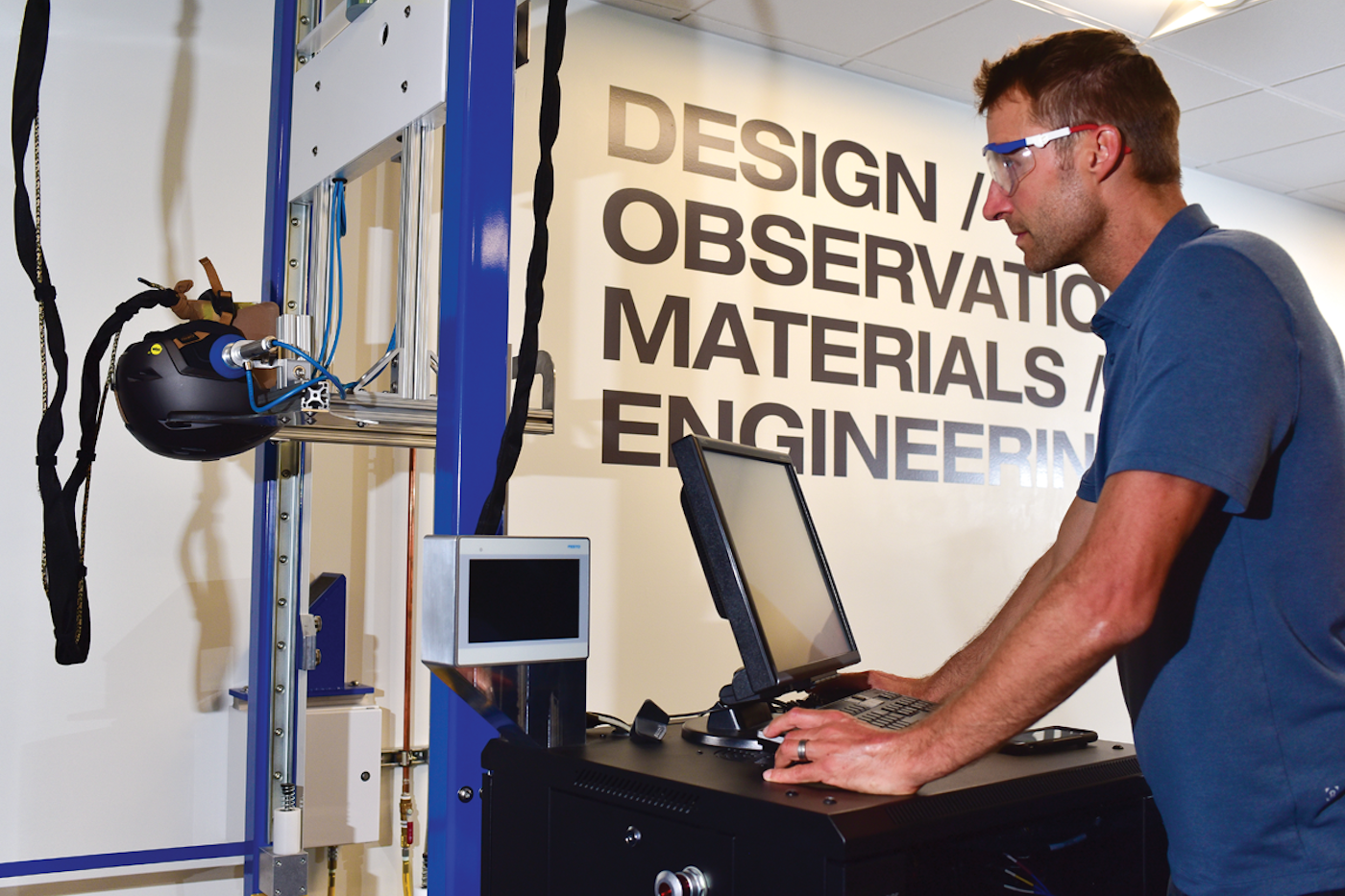
At The Dome, Giro’s exclusive research and development facility located in Scotts Valley, California, analysts are dedicated to providing unbiased, data-driven insights about Giro’s latest protective products.
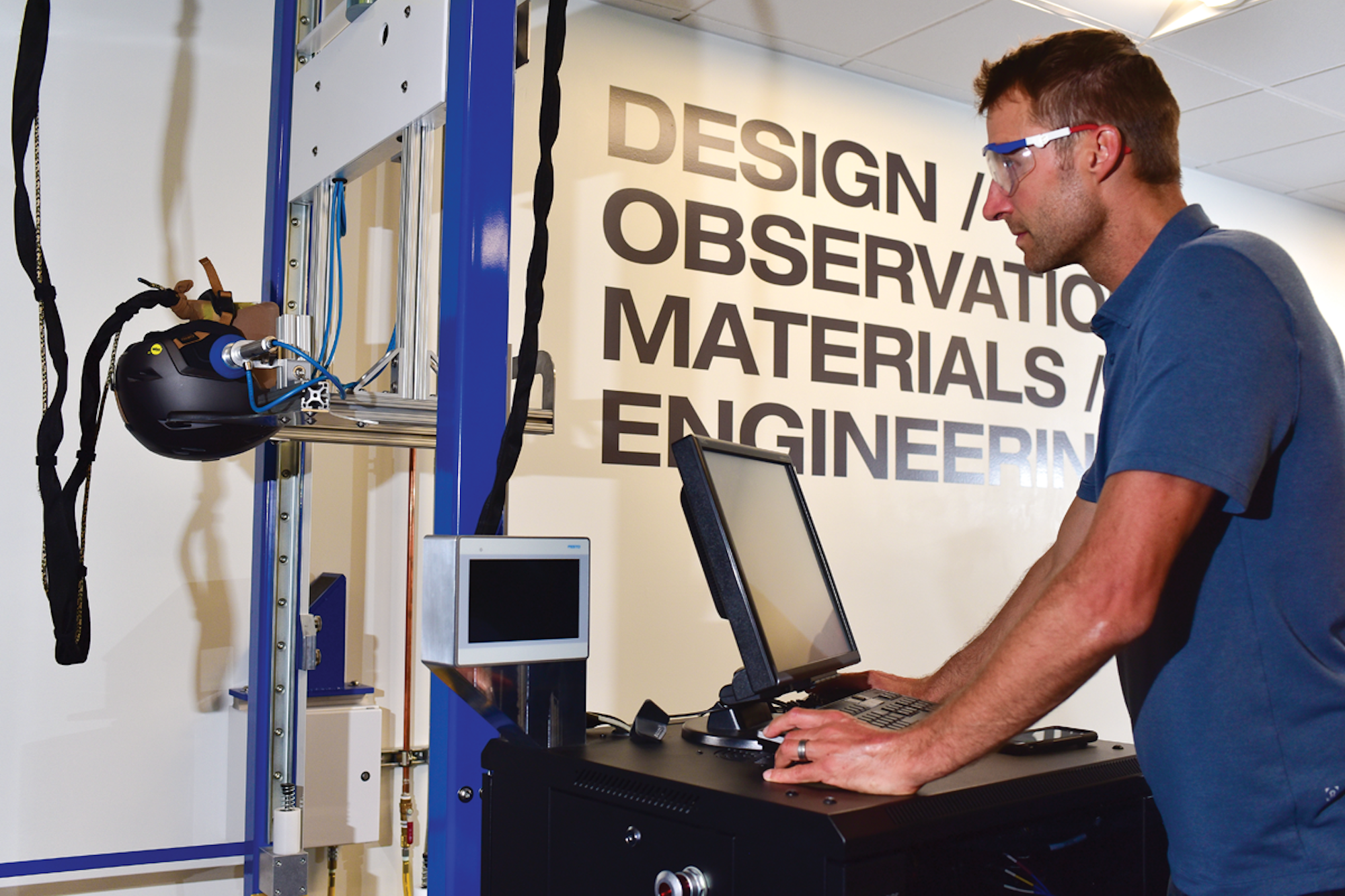
At The Dome, Giro’s exclusive research and development facility located in Scotts Valley, California, analysts are dedicated to providing unbiased, data-driven insights about Giro’s latest protective products.
When I put my helmet on, I want it to disappear. I want it light, comfortable and want it to look as small as possible. I don’t want to look like those guys in Spaceballs coming down the mountain. The Jackson is probably my all-time favorite for that reason; it gives me everything I need in a low-profile package. If I’m going to do a big day of touring, I’ll [instead] use the Grid because, in that scenario, function takes precedence over everything else.
On the goggle side, you’ve gotta ask yourself how important certain features are to you. Where do you live? Are you a skier that goes bell-to-bell? Do you ride through the storm or do you head inside for après when the snow starts falling? Regionality and your habits both play a roll in whether you’ll need a second lens or a lens-change system, to be prepared for the low light in the Northeast or the quickly changing weather in the Rockies. You might even consider having two pairs of goggles if you live in a moist climate such as the Pacific Northwest.
I encourage anybody buying goggles and who also wears a helmet—and I hope you do—to you bring your helmet with you to the shop. It’s gonna be a real bummer if you buy something that doesn’t align. If you’re buying [helmets and goggles] at the same time, start with the helmet first then find a goggle that works for you and the helmet.
“Gaper Gap” can lead to a million things. From fogging and discomfort, to pressure on the nose, brain freeze or whatever. There’s fit—when the helmet and goggles actually work together on one’s face—but the other part is engineering product together so the “stack venting” lines up. This is something that we have on all Giro helmets: They align with the venting system of our goggles so that, as hot air rises, it leaves and you don’t get fogging. We call it “Seamless Integration,” that’s our name-ology for helmets and goggles fitting together.
Lenses have gotten better, and lens quality and shape have definitely evolved, too. There is a big difference in what used to be considered a “good” lens and what’s available to the consumer now. VIVID lenses are game-changing technology. On a greybird day, you can truly see all the contrast in the snow. And snow is a difficult surface to see variations [on]: it’s highly reflective, it’s all one color. If you’re wearing the wrong lens at the wrong time or just a poorly made lens, it’s no different than if you have to squint all day long—you don’t want to do that.
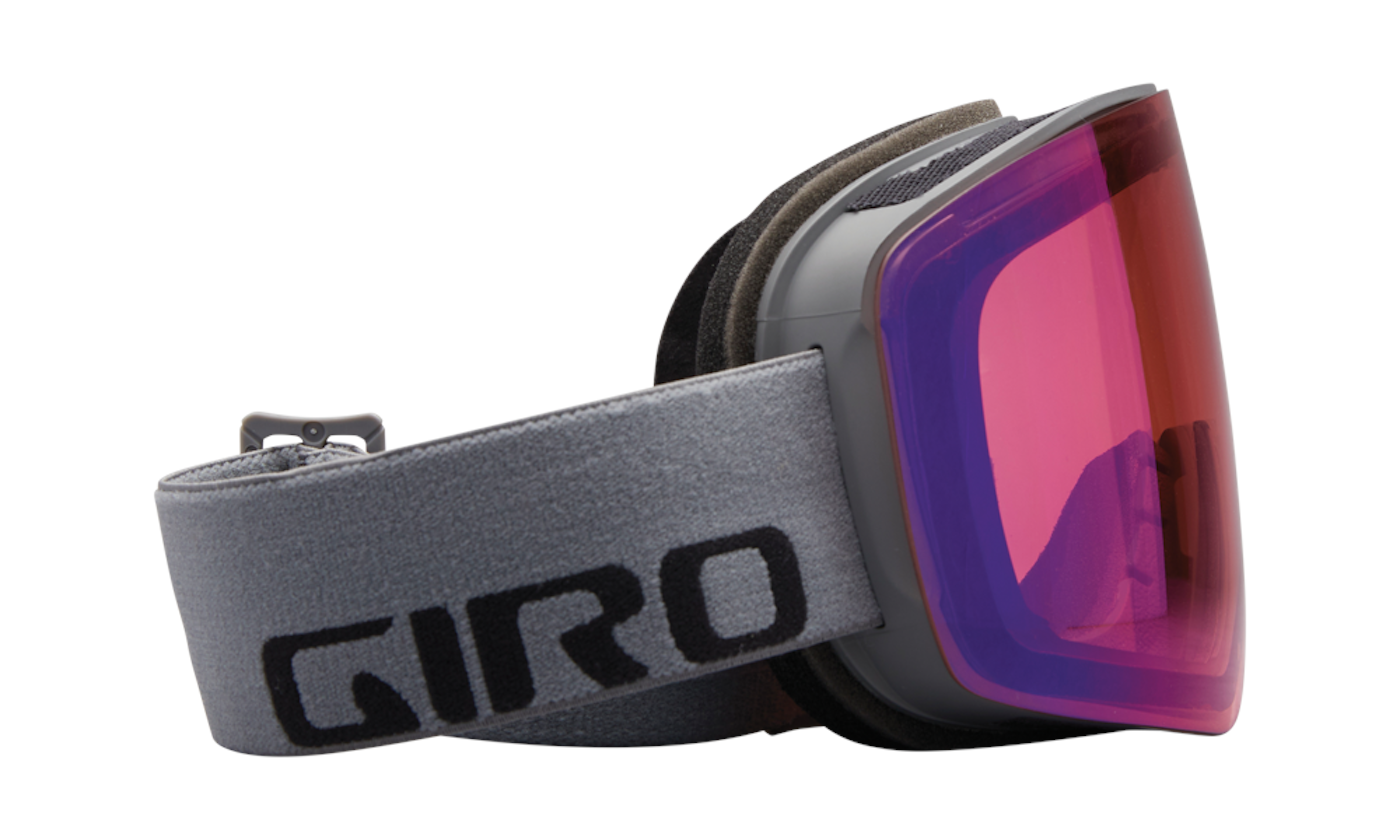
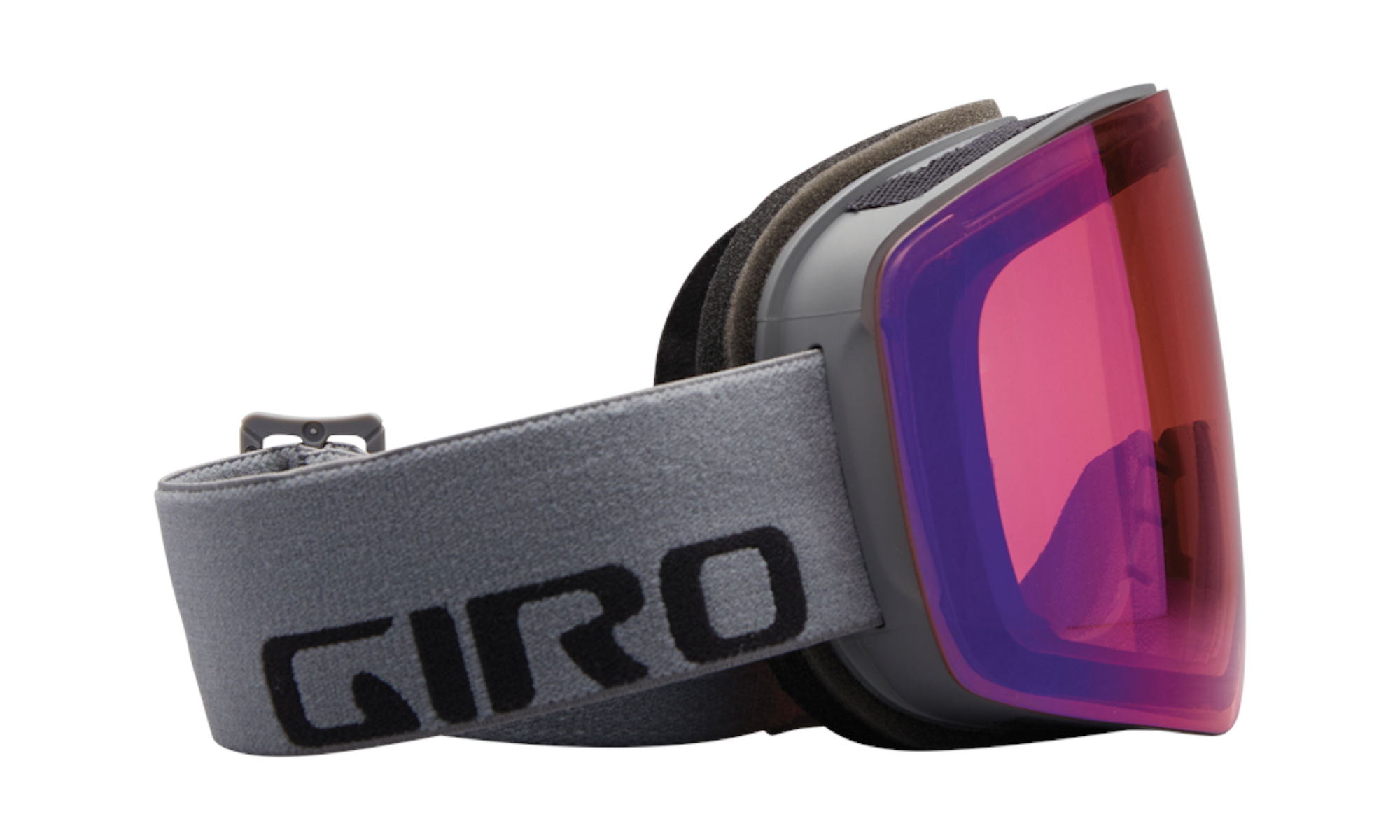
Toric lenses on the Giro Contour goggle provide a wide field of vision.
Toric shaped lenses provide the best optical quality as they allow for a larger field of view while minimizing optical distortion. Spherical lenses were originally built to match the curvature of your eye but, by nature, their shape brings the lens further away from the eye creating optical distortion. And “cylindrical” is a broad-stroke term that can describe a sheet lens, which is first flat then bent into the frame, or it’s a lens injected around a cylinder, providing a good level of optical quality at a lower cost.
Your brain is a muscle. The more you make it work, the more fatigued it’s going to get, and that might slow down your reaction time on the mountain; it truly affects performance. If you wear “gas station” sunglasses and drive around outside for an hour, you’re going to take them on and off—you’re creating optical confusion. The same goes for lesser quality goggle lenses. Whether it’s messing with the colors or optical quality, you’re straining, you’re working harder. Better lenses, like Giro’s VIVID, help you read contrast better—or faster—and that increases your reaction time, increases your confidence.
Passive vs. Active Venting
PASSIVE: Vents are always open and cannot be adjusted.
ACTIVE: Airflow is controlled using a built-in mechanism to open and close vents.
In-mold, Hybrid/Multi & Hardshell Helmet Construction
Generally speaking, a helmet consists of a softer EPS shell which absorbs the energy from impact during a crash. For greater durability against smaller impacts, the helmet is either covered with a harder layer, like a thick ABS plastic-injected shell (hard shell), or a sheet of polycarbonate is fused with the EPS shell (in-mold), which is a lighter-weight solution to the same problem. Sometimes a part of the EPS is covered with ABS-injected plastic and another is covered with a polycarbonate layer; this is called hybrid or multi-shell construction. While a hybrid build increases durability while saving weight, your wallet might take a bigger hit.
MIPS, SPIN & Similar Technologies
These low-friction helmet inserts between the shell and your head work like a ball-and-socket which mimic the protective cerebrospinal fluid in a human’s brain. Oblique impacts are common in skiing and can lead to concussions or worse. These technologies help redirect that energy away from the brain by allowing slight movement of the head relative to the helmet.
Quick-change Lens Systems
Whether you’re fogged up, the clouds roll in or your last face plant covered your lenses in snow, these mechanisms–buttons, levers, magnets–allow skiers to easily and efficiently swap out one lens for another.
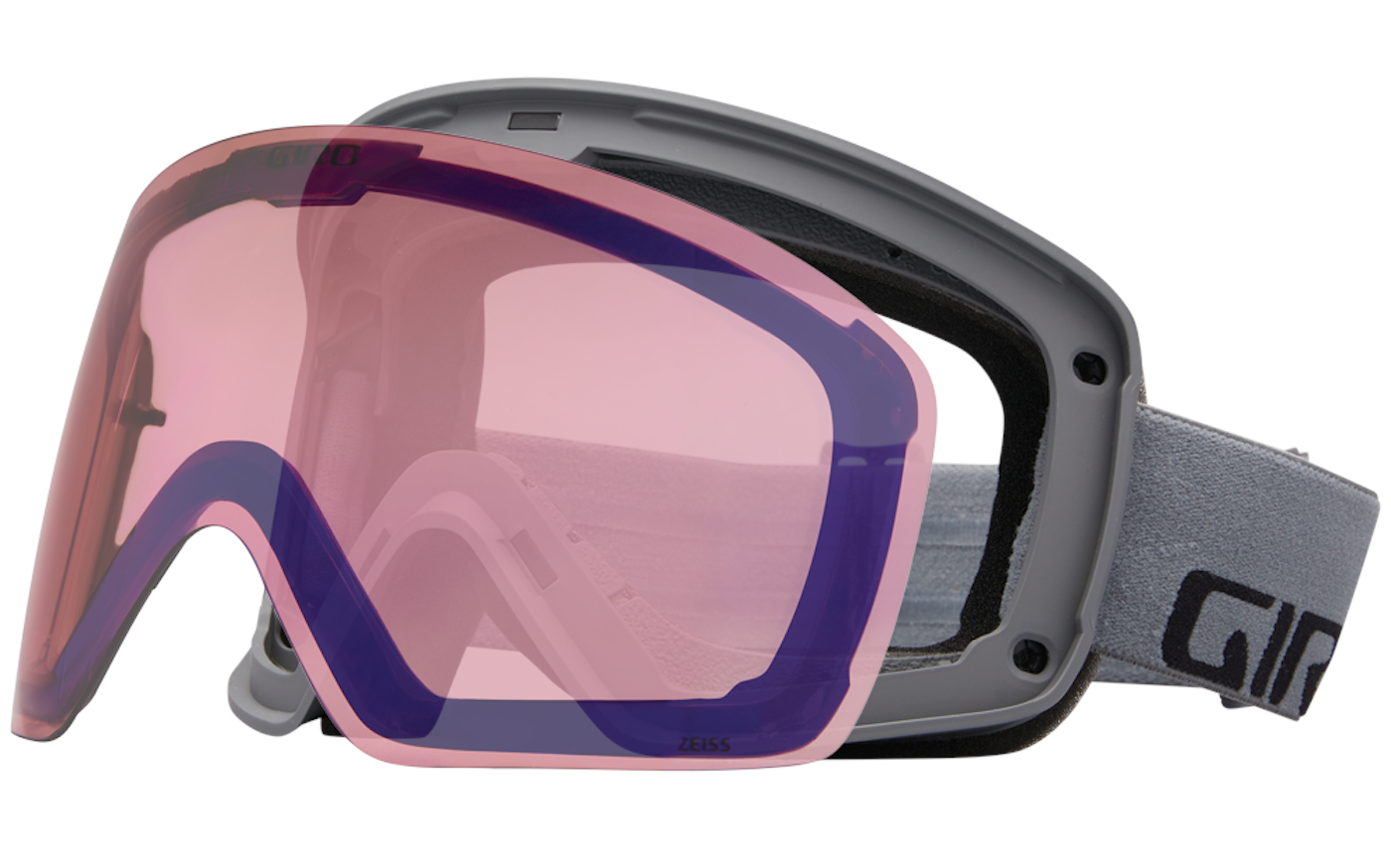
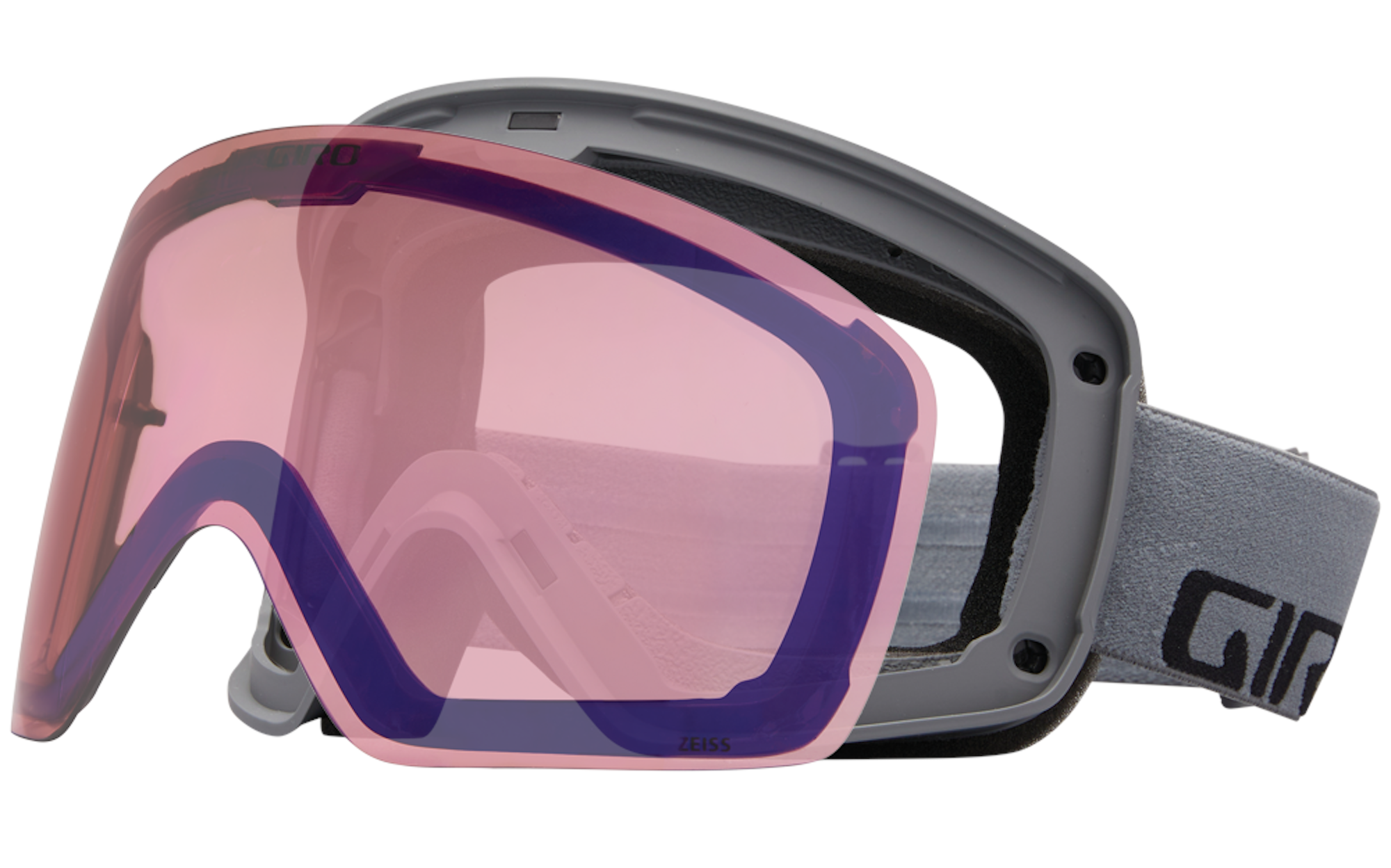
Quick-change lenses on the Giro Contour goggle make lens swaps easy.
Contrast-boosting lenses
Most high-end goggle brands now offer proprietary lens technologies that increase contrast and enhance color. These lenses automatically adjust the wavelengths of light to make details in the snow more apparent and colors more vibrant. Giro’s VIVID lenses is a great example.
Visible Light Transmission and Lens Tints
Visible Light Transmission (VLT) is measured as a percentage of natural light that can pass through a goggle lens and directly correlates to lens tint. On bluebird days, you’ll want a darker tint between 10 and 35 percent to prevent more light penetration, but on grey days, grab a lens with 35 to 80 percent VLT.
Lens Shapes
TORIC: Newest trend in lens shapes. Similar to a spherical lens, but with a tighter horizontal radius than its vertical one, boosting peripheral vision.
SPHERICAL: Curved both horizontally and vertically to mimic the shape of your eyeball, providing a wider field of view up, down and to the sides with a reduction in glare.
CYLINDRICAL: Only curved horizontally to provide a closer fit to the face. Tapered to a thinner profile at the edges to reduce peripheral distortion.
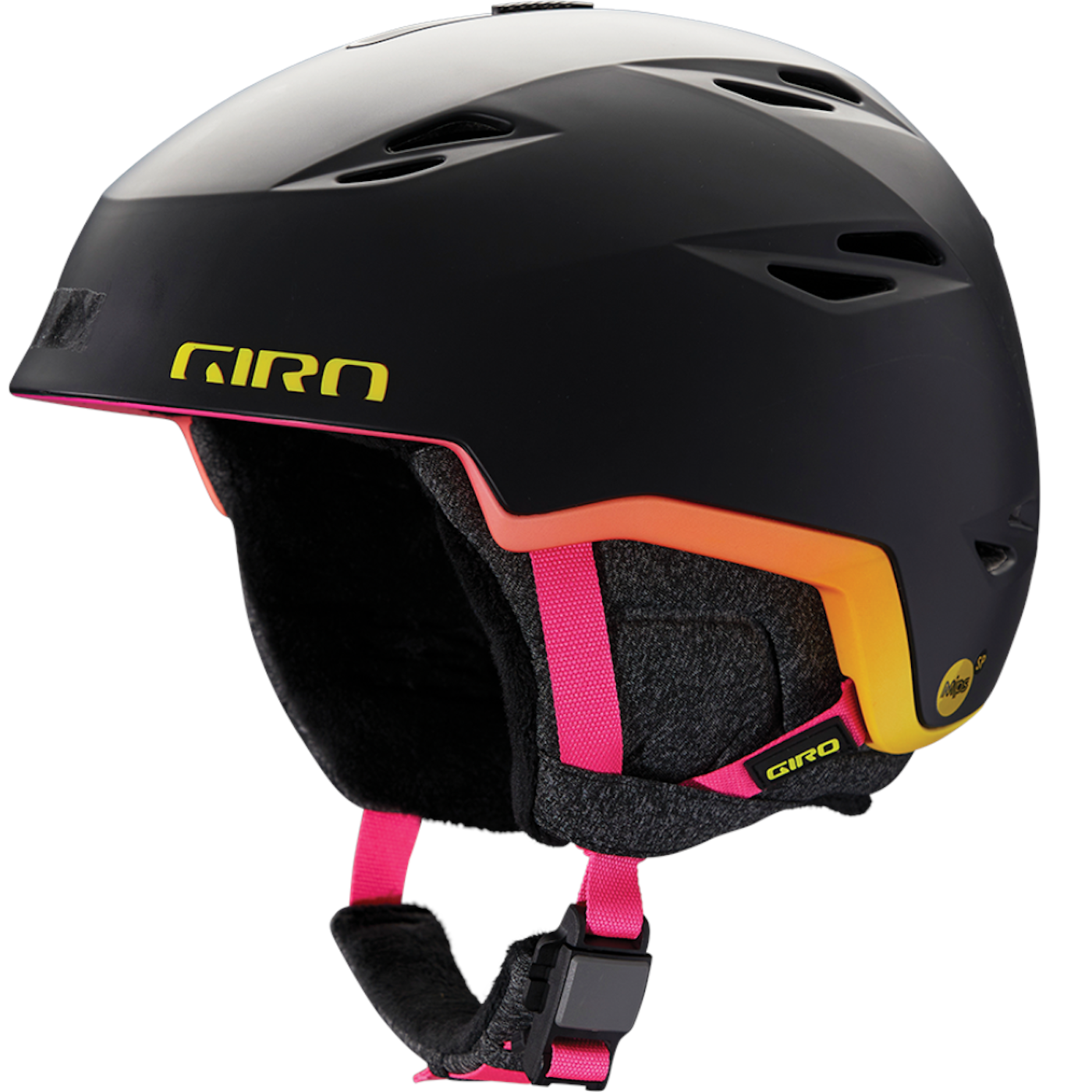
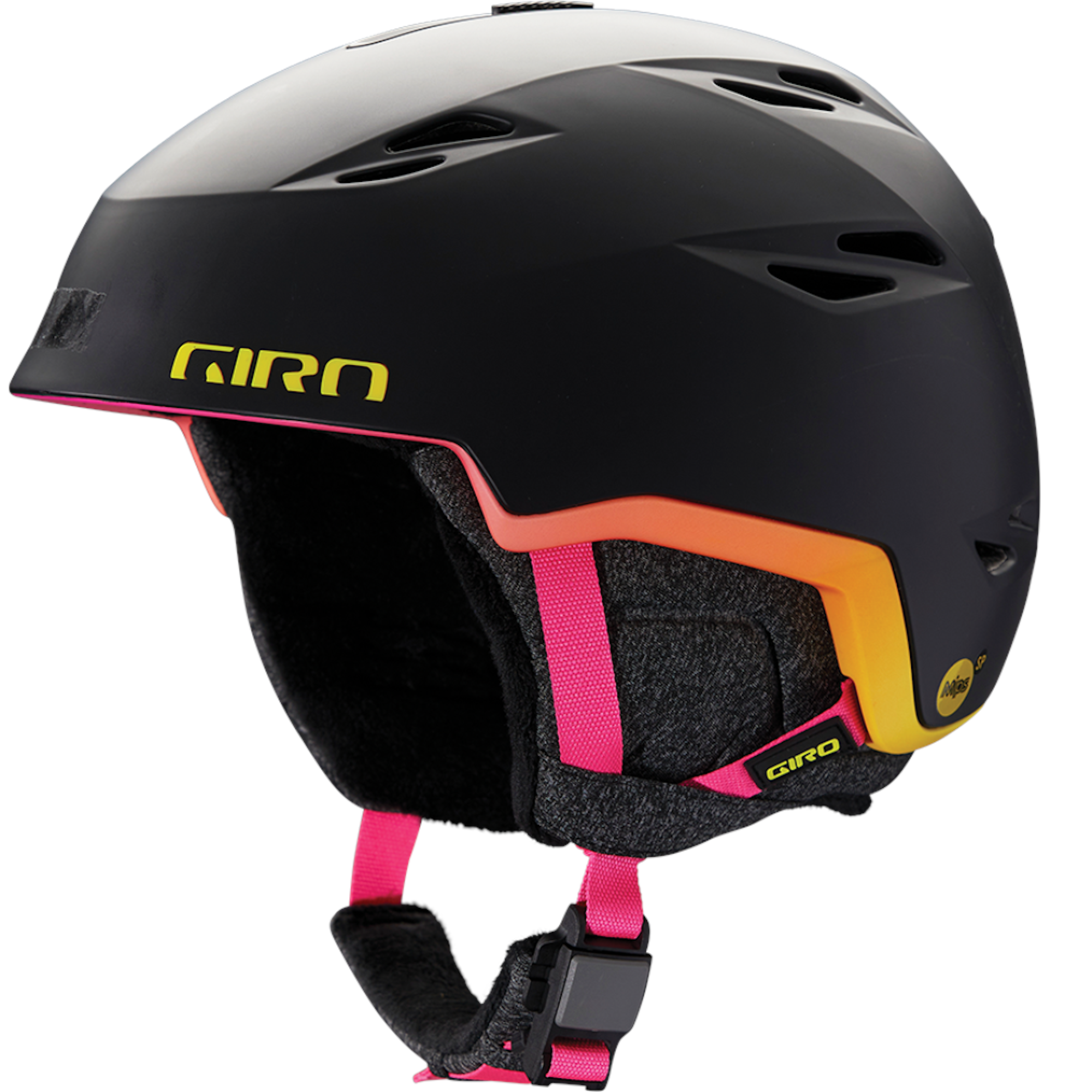
Giro Envi MIPS
Lightweight construction is at the core of the Envi design, into which the engineers at Giro have seamlessly integrated MIPS technology. This women’s-specific helmet features a low-profile dial on the back that not only adjusts the fit around your head but also aligns the helmet vertically to fit better when it’s paired with various goggles. Inside, plush padding and Polartec Power Grid fabrics help manage moisture, while active venting puts you in control of the airflow. Lightweight, protective and chock full of features, Giro’s Envi helmet is the complete package.
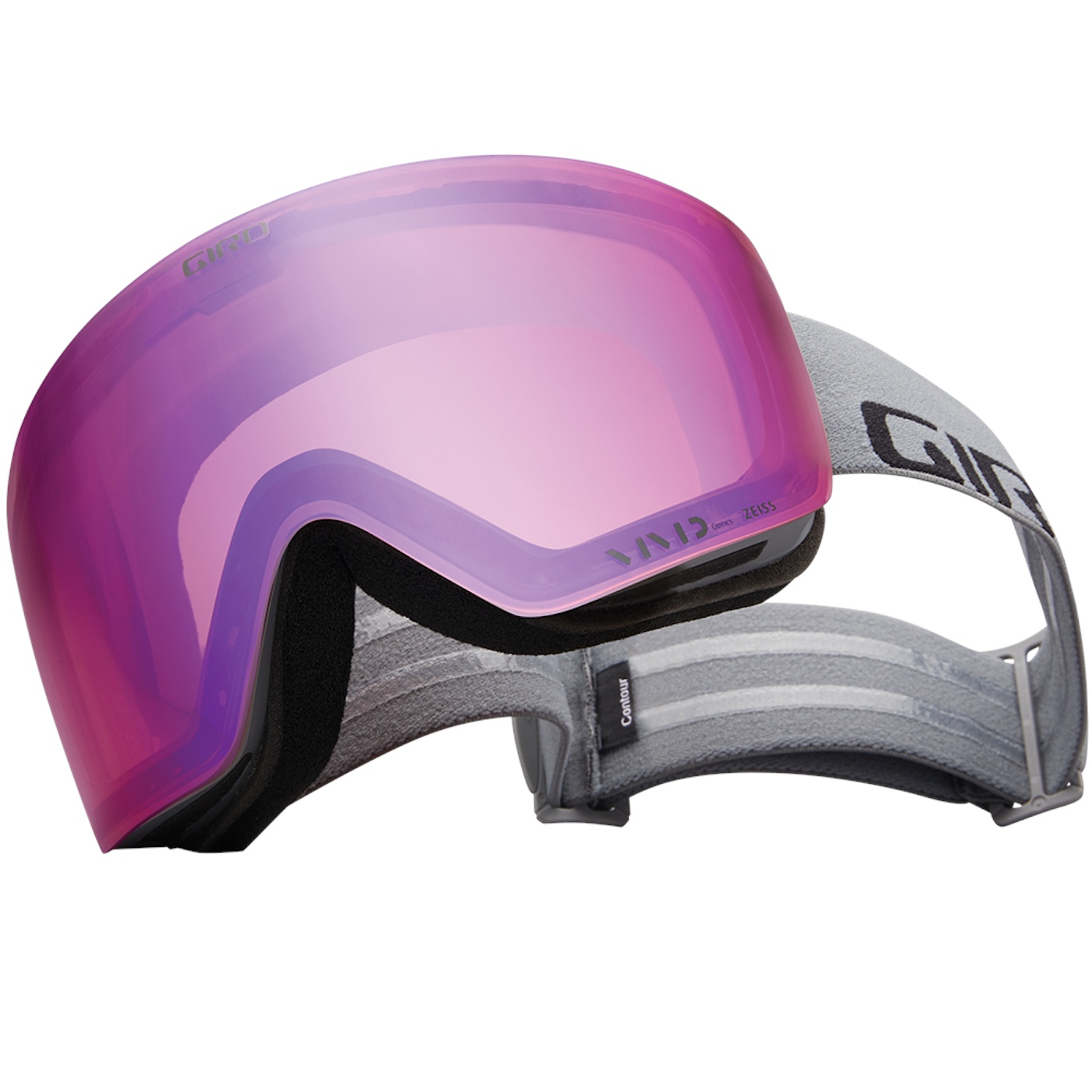
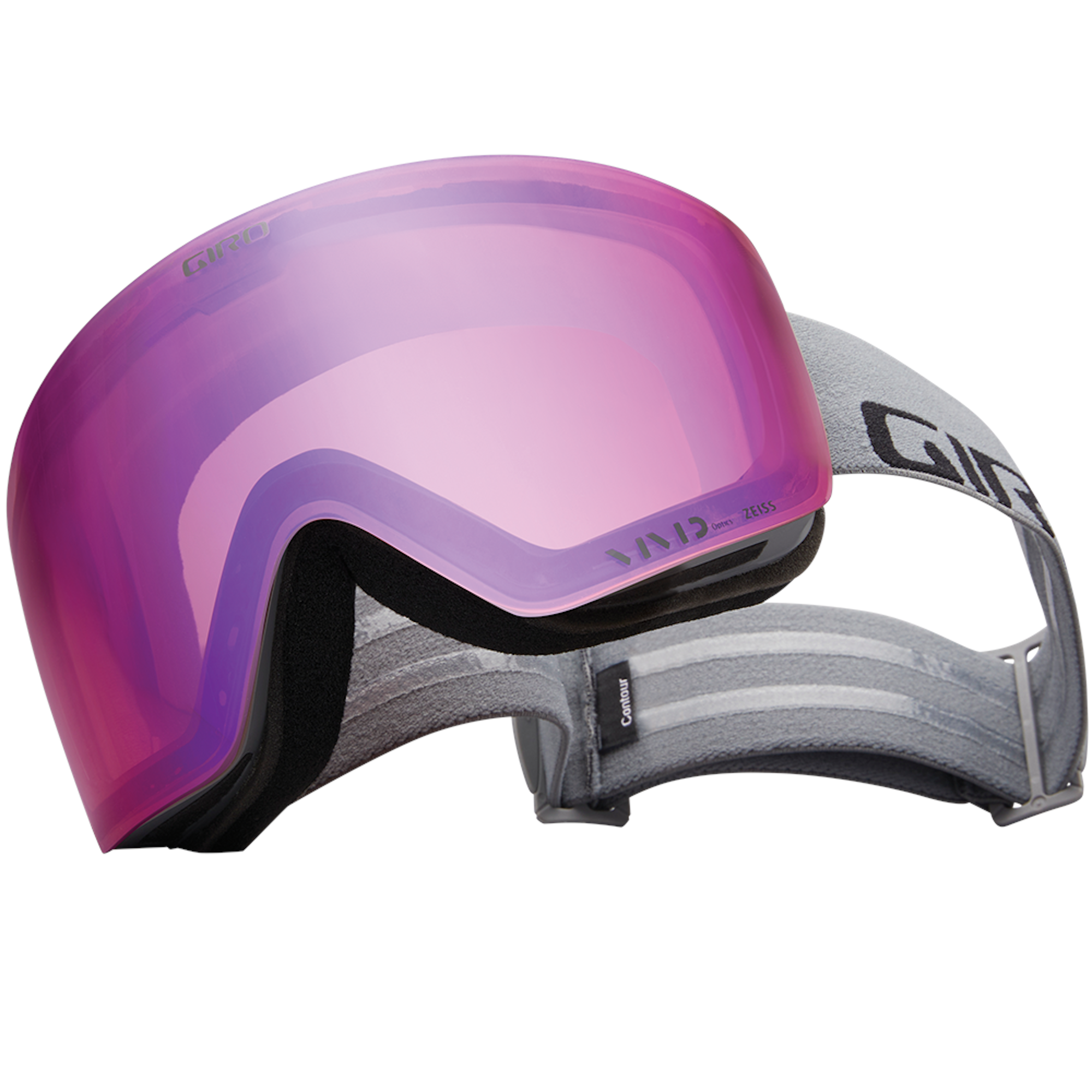
Giro Contour
To enhance the skier’s field of view without adding bulk, Giro’s Contour employs Expansion View Technology—a toric-shaped lens that combines the unencumbered peripheral vision of a spherical lens with the low-profile styling of a cylindrical one. Giro’s proprietary VIVID contrast-enhancing lens, made in collaboration with Zeiss, further heightens the on-snow experience by defining snow variances, blocking harmful UV rays while allowing contrast-boosting “blue light” through. The ventilation pattern atop the goggle frame promotes airflow to eliminate fogging; it’s lined with a comfortable triple-layer face foam; there’s a magnetic quick-change lens system; and every goggle comes standard with a second low-light lens.

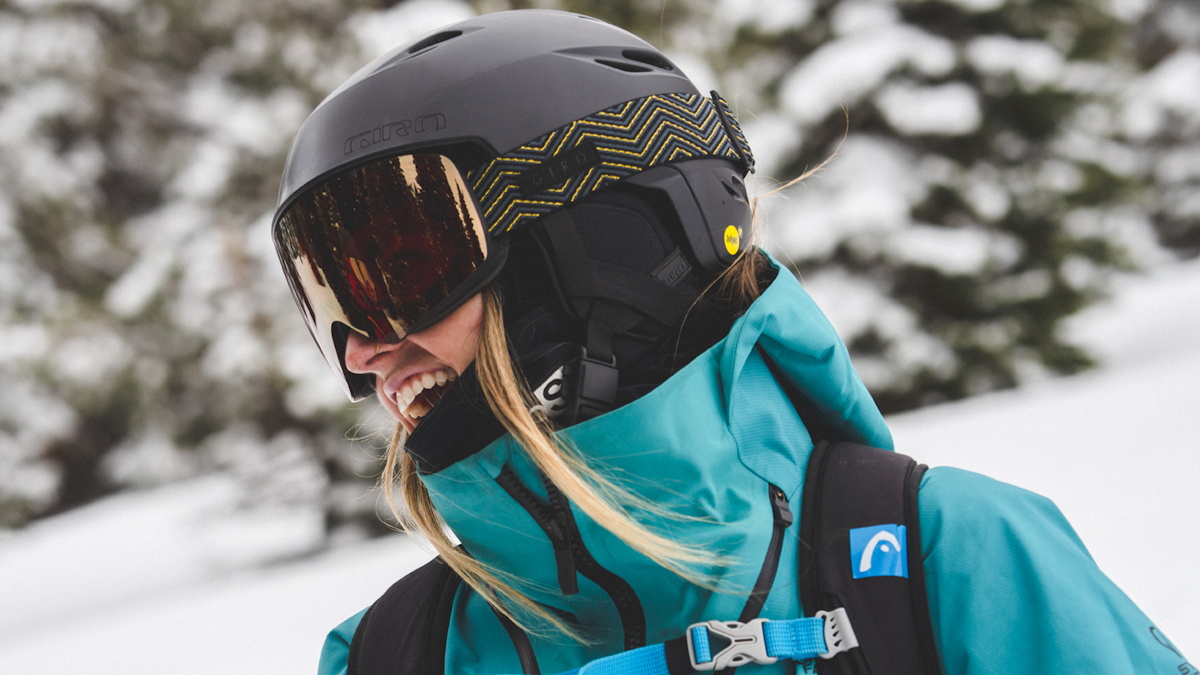

![[GIVEAWAY] Win a Head-to-Toe Ski Setup from IFSA](https://www.datocms-assets.com/163516/1765920344-ifsa.jpg?w=200&h=200&fit=crop)


![[GIVEAWAY] Win a Legendary Ski Trip with Icelantic's Road to the Rocks](https://www.datocms-assets.com/163516/1765233064-r2r26_freeskier_leaderboard1.jpg?auto=format&w=400&h=300&fit=crop&crop=faces,entropy)




![[GIVEAWAY] Win a Head-to-Toe Ski Setup from IFSA](https://www.datocms-assets.com/163516/1765920344-ifsa.jpg?auto=format&w=400&h=300&fit=crop&crop=faces,entropy)


